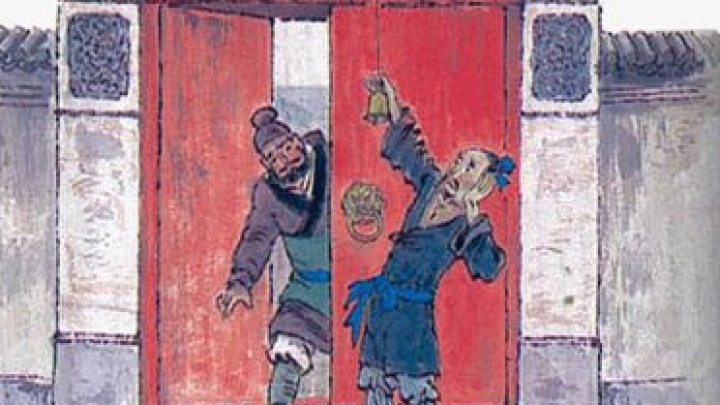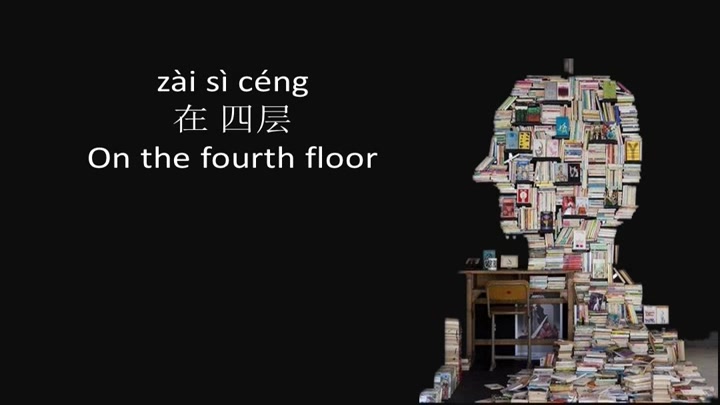tā nǚ ér jīn nián èr shí suì
她女儿今年二十岁
Her daughter is 20 years old this year
在学校 In the school
你家有几口人?
How many people are in your family?
¿Cuántas personas hay en tu familia?
Combien de personnes y a-t-il dans ta famille ?
كم عدد أفراد عائلتك؟
Сколько человек в вашей семье?
我家有三口人。
There are three people in my family.
En mi familia somos tres personas.
Il y a trois personnes dans ma famille.
هناك ثلاث أفراد في عائلتي.
В моей семье три человека.

Click here to get a hard copy of this book
在办公室 In the office
你女儿几岁了?
How old is your daughter?
¿Cuántos años tiene tu hija?
Quel âge a ta fille ?
كم عمر ابنتك؟
Сколько лет вашей дочери?
她今年四岁了。
She is 4 years old this year.
Ella tiene 4 años este año.
Elle a 4 ans cette année.
هي في الرابعة هذا العام.
Ей 4 года в этом году.

在办公室 In the office
李老师多大了?
How old is Teacher Li?
¿Cuántos años tiene la profesora Li?
Quel âge a le professeur Li ?
كم عمر المعلمة لي؟
Сколько лет учителю Ли?
她今年50岁了。
She is 50 years old this year.
Ella tiene 50 años este año.
Elle a 50 ans cette année.
هي في الخمسين هذا العام.
Ей 50 лет в этом году.
她女儿呢?
What about her daughter?
¿Y su hija?
Et sa fille ?
وماذا عن ابنتها؟
А как насчет её дочери?
她女儿今年20岁。
Her daughter is 20 years old this year.
Su hija tiene 20 años este año.
Sa fille a 20 ans cette année.
ابنتها في العشرين هذا العام.
Её дочери 20 лет в этом году.


儿化的发音 The Retroflex Final 汉语中的“儿”可以和前面的音节结合成为一个音节。变成“儿化音”。汉字书写时表示为“汉字—+儿”,拼音书写时在该汉字的拼音后加“r”。例如: “儿(ér)” can be combined with a syllable before it, forming a retroflex syllable, which is written as "character + 儿" and spelt "syllable + r" in pinyin. For example
| xiǎoháir | xiǎoniǎor | fànguǎnr | xiāngshuǐr |
| 小孩儿 | 小鸟儿 | 饭馆儿 | 香水儿 |

发音辨析:以 i、u、ü开头的韵母
Differentiation: pronunciation of finals beginning with i,u,ü
听录音并跟读,注意有 i、无 i 时发音的区别
Listen to the recording and read after it. Pay attention to the differences between the pronunciations of the finals with and withou i.
| a | ia | e | ie |
| ao | iao | ou | iou(iu) |
| an | ian | ang | iang |
| ong | iong |
听录音并跟读,注意有 u、无 u 时发音的区别
Listen to the recording and read after it. Pay attention to the differences between the pronunciations of the finals with and withou u.
| a | ua | ai | uai |
| ei | uei(ui) | an | uan |
| en | uen(un) | ang | uang |
| eng | ueng |
听录音并跟读,注意有 ü、无 ü 时发音的区别
Listen to the recording and read after it. Pay attention to the differences between the pronunciations of the finals with and withou ü.
| e | üe | an | üan |
| en | ün |
声母送气音和不送气音发音的区别
Difference between Aspirated and Unaspirated Initials
汉语声母的发音有送气和不送气的区别,b-p,d-t,g-k,j-q,z-c,zh-ch,以上各组声母中前一个是不送气音,后一个音是送气音。
There are aspirated and unaspirated initials in Chinese, such as b-p, d-t, g-k, j-q, z-c and zh-ch, among which the first one in each pair is unaspirated and the second one is aspirated
听录音并跟读,注意送气音和不送气音发音的区别
Listen to the recording and read after it. Pay attention to the differences between aspirated and unaspirated initials.
| b | p | d | t |
| g | k | j | q |
| z | c | zh | ch |
听录音并跟读,注意声母发音的区别
Listen to the recording and read after it. Pay attention to the differences between the initials.
| bàng | pàng | dù | tù |
| gǒu | kǒu | jī | qī |
| zì | cì | zhuō | chē |

拼音规则(4):隔音符号
Rules of Pinyin(4): syllable-dividing mark
a、o、e 开头的音节连接在其它音节后面时,为了避免音节的界限发生混淆,用隔音符号(‘)隔开,例如pí’ǎo(皮袄)
When a syllable beginning with a, o or e follows another syllable, the syllable-dividing mark(’) is used to separate the two syllables, for example, pí’ǎo(皮袄, fur-lined jacket).
听录音并跟读,注意有无隔音符号的不同
Listen to the recording and read after it. Pay attention to the differences between the words with and without the syllable-dividing mark.
| piāo | pí’ǎo | xiān | xī‘ān |
| to float | fur-lined jacket | earlier, before | City of Xi‘an |
| jiē | jī‘è | jiāng | jī’áng |
| to receive | hungry | will, shall | excited adn impassioned |
| fānàn | fān’àn | fǎngǎn | fāng’àn |
| to launch an attack | to reverse a verdict | to loathe | work plan |




Click here to get a hard copy of this book






